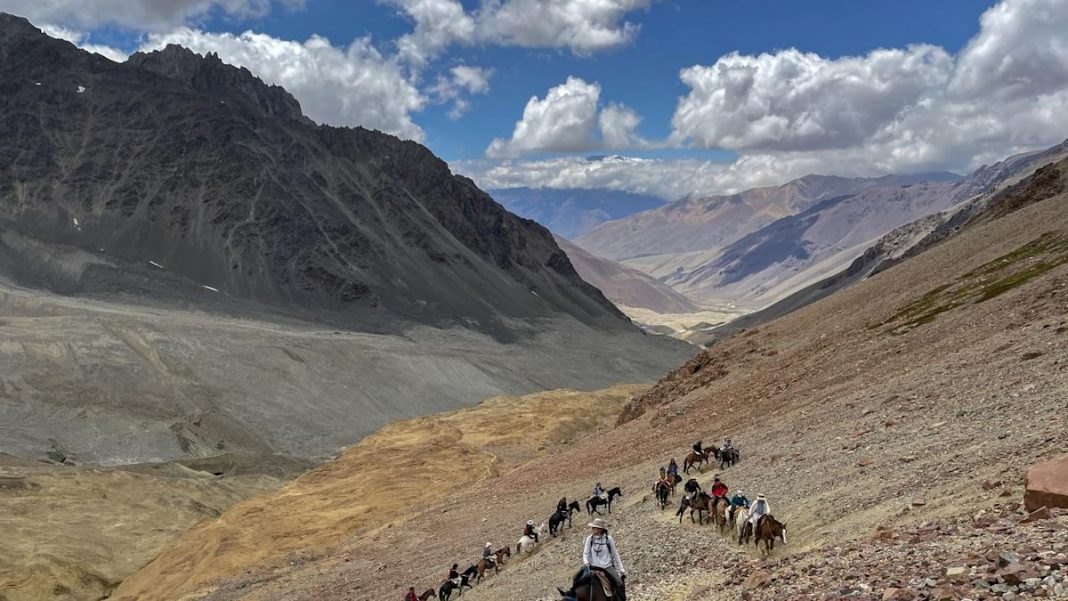Overview of the Filo del Sol Copper Deposit
The Filo del Sol copper deposit, located along the border of Chile and Argentina, has garnered attention for its potential to be one of the largest copper deposits in the world. Recent evaluations suggest that the area may contain an astonishing five times more metal than previously estimated, establishing it as a prominent site for mining operations. The geological interests in this region are heightened by its positioning within the Atacama Desert, a location historically known for vast copper reserves, resulting from its formation in the Andes and its placement in the eastern segment of the Ring of Fire.
New Resource Estimates
A recent mineral resource estimate published earlier this month has revealed that the companies managing the Filo del Sol deposit, Lundin Mining and BHP, may have discovered significantly more metals than initially anticipated. The estimates indicate the presence of up to 13 million tonnes of copper, along with approximately 907,000 kilograms (32 million ounces) of gold and 18.6 million kilograms (659 million ounces) of silver. This substantial update was based on data collected from 400 additional exploration holes, highlighting that deeper mineralization contained much higher quantities of resources than those measured at shallower depths. Experts speculate that further exploration into the northern and southern boundaries of the deposit could unearth even greater riches.
Significance of the Discovery
According to executives from Lundin Mining, the Filo del Sol deposit has emerged as one of the most significant greenfield discoveries in the last three decades. The initial mineral resource findings suggest that it holds the potential to be among the highest-grade undeveloped open-pit copper projects globally and may also rank as one of the largest sources of gold and silver. Given the demand for copper, gold, and silver in various industries, including renewable energy, aerospace, and telecommunications, this deposit could play a crucial role in supporting the transition to green energy technologies.
The Challenges of Mining in the Andes
While the discovery of such valuable resources is promising, the actual process of extraction presents significant challenges. The Filo del Sol mine is situated approximately 5,000 meters (16,400 feet) above sea level, where the extreme altitude and harsh environmental conditions can severely impact the health and safety of workers. Altitude sickness is one of the risks faced by employees laboring at high elevations, alongside logistical hurdles associated with transporting equipment and supplies to such remote locales.
Environmental Concerns
The environmental impact of mining in this delicate ecosystem is a major point of concern. Extracting minerals from the Andes, particularly from a formation that occurred during the Late Cretaceous, raises questions about the potential harm to the existing fragile environment. Mining operations on both sides of the Chile-Argentina border have been under pressure to adopt more sustainable practices. Some mining sites in the Atacama Desert are making efforts to transition to renewable energy-powered operations. In December 2024, Central Puerto, Argentina’s largest private electricity generator, initiated a feasibility study to develop transmission lines for renewable energy to support mining operations in the northwestern region.
Regulatory Issues and Water Use
There are ongoing accusations from environmental organizations, such as the NGO Fundación Ambiente y Recursos Naturales (FARN), that Lundin Group has violated Argentina’s Glacier Law, which prohibits establishing mining pits in periglacial areas. This law is crucial as roughly 70 percent of the country’s drinking water is sourced from glaciers, and any disruption to these areas could have dire consequences for the local population. Additionally, mining itself consumes a significant amount of water. For instance, La Alumbrera, one of Argentina’s major mining sites, reportedly uses 25 billion liters of water annually, equating to about 34 percent of the water consumption required for the nearly half a million people residing in the region, as outlined by FARN.
Balancing Mineral Extraction and Environmental Protection
While the necessity for minerals to facilitate a transition away from fossil fuels is increasingly recognized, it is essential to strike a balance between resource extraction and environmental conservation. The quest for critical minerals must be managed carefully to avoid causing irreparable harm to ecosystems and communities. The mining sector in regions like the Andes faces a delicate balance: finding ways to fulfill global demands for essential resources while ensuring that practices do not compromise water supplies, biodiversity, and the health of local environments.
Conclusion
In summary, the Filo del Sol copper deposit holds tremendous potential for delivering invaluable resources needed in various industries, particularly as societies move towards greener energy solutions. However, the challenges associated with mining in high-altitude environments, combined with the environmental implications and regulatory frameworks, underscore the complexity of such ventures. Moving forward, it is imperative that mining operations engage in sustainable practices that safeguard both environmental integrity and the rights of local communities as they navigate the demands of the global market.
You Might Also Like



